
It’s 9:00am on a stinking hot November day at Queensland Raceway and the historic first test of the new Ford Mustang Supercar is off to a slow start. In fact, it hasn’t started at all.
Designated driver Fabian Coulthard has forgotten his helmet and had to go home to get it, while his DJR Team Penske team-mate Scott McLaughlin has only just this morning flown in from New Zealand. Not surprisingly, McLaughlin has been called to get to the track, pronto.
The Mustang rumbles out around 9:10am, so not too much time lost. Straight away, there’s more drama. The front air dam – or splitter – that extends from the underside of the car like an engorged tongue is going limp under the pressure.
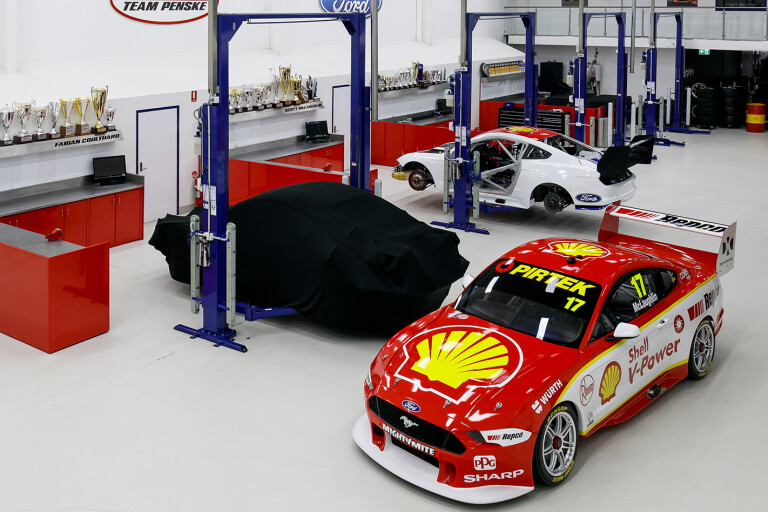
As McLaughlin roars down the back straight, the splitter is staccato smacking on the ground, making the car sound like it’s banging on the rev limiter – bup-bup-bup-bup. It’s just too weak to hold itself in place as air rushes over it. McLaughlin pits. Repairs take 90 minutes.
Back on track, it also becomes apparent the standard hinges taken from the Mustang road car are struggling to keep the bootlid in place. The rear wing is exerting too much load and there’s too much drag. The lid is literally being sucked off. It’s bolted down for the rest of the day.
Out on track again and the car’s 475kW 5.0-litre pushrod V8 is failing to produce meaningful speed. It’s nothing to do with the Mustang’s cooling capabilities, merely the simple fact that the ambient temperature is arcing toward 40 degrees Celsius and track temp towards 60. In the end, the best time the car records is a 1:10.8. A quick QR time in a Supercar is in the 1:08 range.
“We did not panic about that [time] because we had other things to panic about,” laughs DJRTP competition director Ludo Lacroix. “The wing was failing, the front splitter was flapping, but the good thing was it enabled us to check all the systems.”
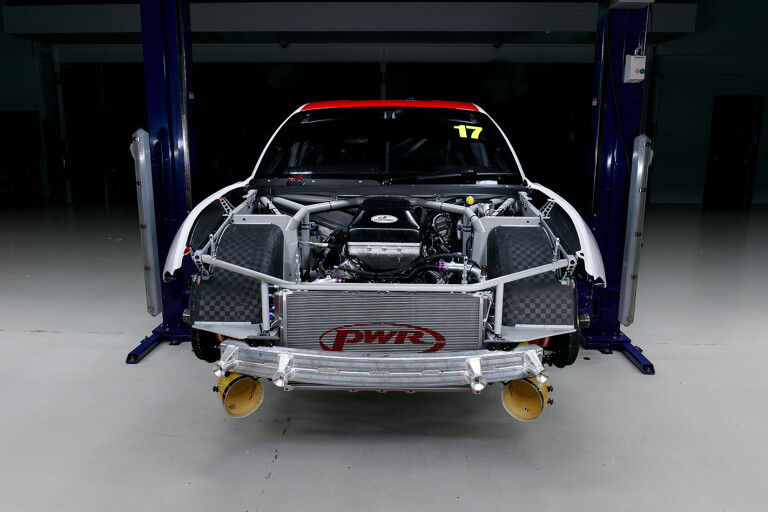
Lacroix can afford to laugh. Now. Three days after those faltering first laps, the Mustang was at Phillip Island and performed flawlessly, logging more than 100 laps. And to cap it all off, McLaughlin, the four-wheeled modern master of the MotoGP track, ripped off a 1:30.4. The Supercar lap record is a 1:31.214; the qualifying lap record, a 1:29.062. The flying Kiwi owns them both.
“It’s a damn good lap considering it was a green circuit and we were the only car out there,” says Ryan Story, managing director of DJR Team Penske. “To have done a 30.4, we were thrilled.”
They had every right to be. Phillip Island is the circuit in Australia that tests aerodynamics and tyres the hardest. Big, fast, loaded corners. Going there and going that quickly ticked a lot of boxes.
Story and Lacroix are sitting either side of a desk in the boss’s office. Stand up and look through the window and the workshop of the designated Mustang Supercar homologation team is spread out below.Story is in charge of keeping this whole show on the road; Lacroix looks after making the team win on the track.

These two are the sort of odd couple the transient world of motor racing tends to throw together. Story is tall, pale, and a relative newcomer to Supercars racing. From Yorketown in South Australia, he became a Dick Johnson fan as a child and grew up to sponsor and then run the team, saving it from bankruptcy and then facilitating a takeover by US racing mogul Roger Penske.
He offers up the disarming persona of an ambling nerd – as well as Tim Tams and Coca-Cola to his guests. But don’t be fooled, he has a formidable intellect, a swag of university qualifications and a rare combination of cunning and integrity that (so far) has allowed him to navigate the cannibalistic Supercars paddock with success.
Lacroix is squat, French, loud, brilliant, arrogant, charismatic and often injured, thanks to his love of various adventure sports. Each time I shake his hand I count his fingers, as he seems to lose them regularly. He still walks with a limp, thanks to a huge motocross accident in the mid-2000s.
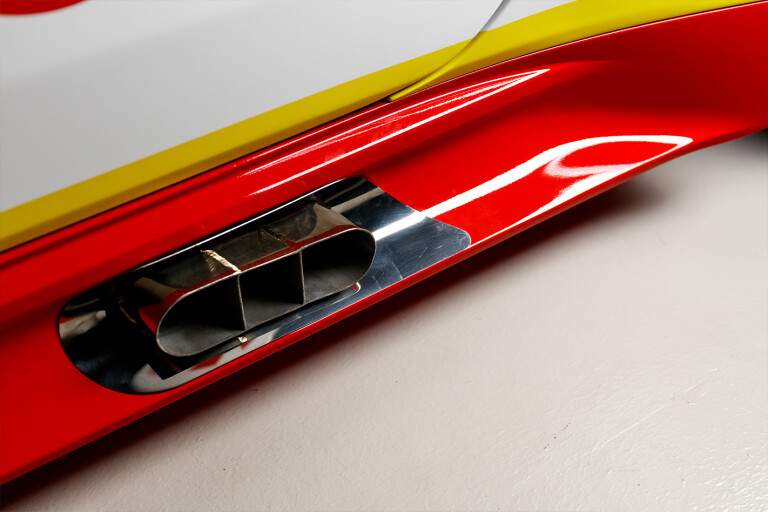
A DTM and BTCC-winning engineer in Europe, he came to Australia in 2003 and led an overhaul of touring-car design, turning what he derisively called Panzers – or “Ponzers” in his Monty Python Franglish – into sophisticated racing weapons.
At Triple Eight Race Engineering he led the design of a series of successful Ford and Holden Supercars. Two years ago he moved to DJRTP. In Supercars this was a more seismic event than most driver swaps. T8 owner Roland Dane publicly labelled him duplicitous.
Lacroix has answered with results, guiding DJRTP to the teams’ championship in 2017 and the drivers’ championship with McLaughlin in 2018.
Contrasts sit side-by-side down in the workshop as well. The stalwart FG X and next to it the bare bones of a Mustang. The FG X is the last in a line of Falcon V8 sedan racers that stretches back past the Supercars category’s 1993 beginnings into the Group C and Series Production days.
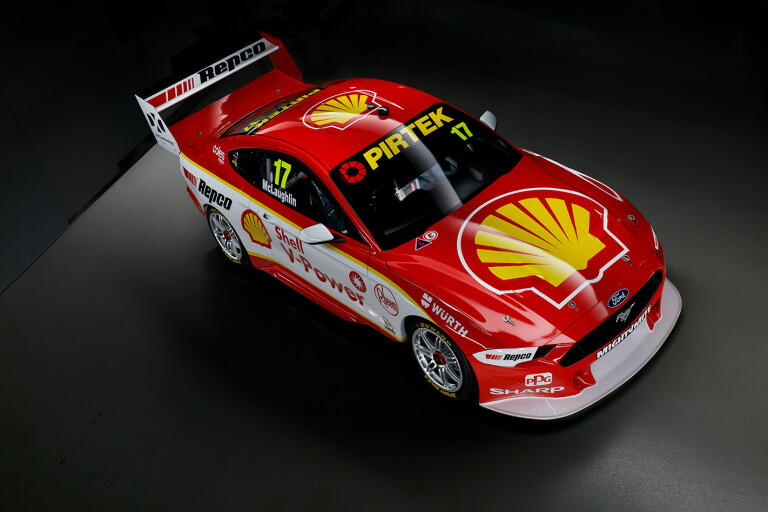
Last year, the newly imported ZB Commodore debuted in Supercars and created a bunch of firsts. The first Holden based on an import to race in what was once called the Australian touring car championship, the first Holden Supercar not to be based on a V8 rear-wheel-drive road car and the first five-door to appear in Supercars.
The Mustang is the first two-door to race in the modern era, but at least the production car is rear-wheel drive and powered by a 5.0-litre engine – albeit not the same one as the Supercar. Look back, and Mustangs ran in the 1960s, early ’70s and ’80s – Dick Johnson, who still part-owns DJRTP, drove one briefly in the ’80s – and Ford campaigned two-door Falcon XA, XB and XC coupes in the ’70s; Dick raced them, too.
Glorious big 5.7-litre bastards of things they were. Who could forget Allan Moffat and Colin Bond (and Jacky Ickx and Alan Hamilton for that matter) scoring that glorious 1-2 at Bathurst in 1977? No matter how many times Holden does it, it’s still the greatest finish to The Great Race ever.
For all that, the 2019 Mustang is still hugely significant. It marks Ford’s formal return to Supercars racing after a three-year absence, which is key for the health of a category that’s seen Volvo and Nissan come and go in recent years.
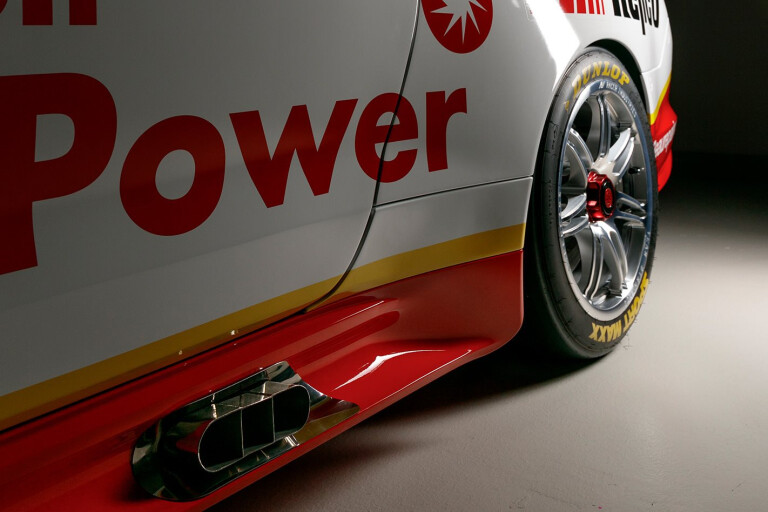
Getting Ford to sign up was no easy task. It took nearly a year of secret meetings and pleadings from the Ford teams – and some very public threats from Roger Penske to switch to Holden – to convince Ford to back a Falcon replacement.
So Ford versus Holden again. Just like the old days… only not. This is a new era, post the local-manufacturing apocalypse.
Story and Lacroix are two absolutely pivotal players in the Mustang Supercar program. They are at the centre of a network that stretches from south-east Queensland to Melbourne and on to the US. It wraps in Ford Australia, Ford’s other Supercar team, Tickford Racing, Ford’s Asia-Pacific design office in Melbourne and Ford Performance in Michigan, the blue oval’s global hot-tuner road and racing arm.
Looking over their shoulders are another layer of important people, like Penske Racing boss Tim Cindric and Ford management at global HQ in Dearborn.
The logistics of all this are mind boggling. Phone calls, emails, digital files being worked on night and day on opposite sides of the globe, and weekly conference calls on the Ford internal Webex comms system.
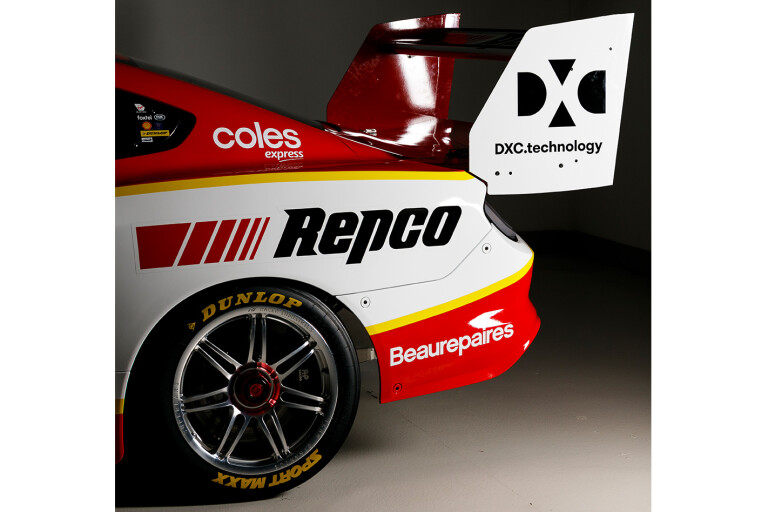
“For me, the amount of coordination we’ve had between all these different parties, that’s huge,” Ford Performance’s Mustang Supercar program leader Brian Novak tells Wheels from Dearborn. “We’ve had coordination before but it’s been in the same place, or one location with different teams in it.
“But you add in design studios, Ford of Australia and the multiple racing teams, and then we are here. It’s a bigger deal in terms of coordination than I have done before.” That’s from a bloke whose last project was developing the Mustang NASCAR.
Dick Johnson to drive Mustang Supercar in Adelaide demo
And then overlay the timeline. DJRTP had its first meeting about this program with Supercars on March 29, 2018. The glasshouse dimensions were locked in by late June, computer aided design (CAD) and computational fluid dynamics (CFD) studies were fundamentally complete by early August. The last body panels were being attached to the first Mustang hours before that first test on November 7, and it was successfully homologated on December 12.
“And we ended up winning the championship,” points out Story. “But at no point in time did our race program compromise our test program, nor did our test program compromise our race program.”
One fundamental eased this challenge. This far-flung group was not developing a Supercar from the ground-up. The way the Gen2 (or Car of the Future) rules work, all cars are based on an identical chromoly steel spaceframe, which incorporates the rollcage. Every car has the same wheelbase and same tracks.
That means the road car’s body has to be massaged to fit the standard chassis. Then, under the composite skin, a whole lot of standardisation applies. For instance, the position of the engine, the driver, the front undertray and fuel tank are fixed; the independent rear suspension is a control item, as are brakes and tyres. Shock absorbers can be selected from an approved basket of brands and models.
The biggest technical freedom is the front end of the car, relating to double wishbone, upright and hub design.

Ford teams can, and are, literally cloaking the mechanicals of their existing Falcons in new Mustang composite panels. Among the six Mustangs expected on the grid at the Adelaide 500 for the new season opener there will be a combination of new and repurposed cars.
Plugged into their cockpits, the drivers will hardly notice the difference. The controls will be the same, the seating position will be the same as a Falcon. The big hint they are in a new car will be a slightly better view out, because the XR8 bonnet hump has gone.
For the mechanics, it’s a similar story. There have been minor design tweaks to aid efficiency, but the componentry they maintain, fettle and replace will be much the same (although the entire field swaps to a new Xtrac transaxle for 2019). The big change will come when they attach the composite panels to the inner body. Voila… Mustang!
That amount of carry-over undoubtedly simplifies the task, but doesn’t make it simple, given the timeframe to complete the job. The body is the big challenge; making it fit, making it aerodynamically competitive, and making it look as much like the road car as possible.
That last item is a critical requirement of both Supercars and Ford, but it’s been the hardest objective to achieve. It’s the one that’s got everyone talking and plenty of them not approving. Out in the hyper-critical world of social media, race fans have been having a meltdown about the ‘mutant’ Mustang they have seen only in limited video and still images.
Brabham BT62 sets Bathurst outright lap record
“Give us a year, give us another six months and to be fair … we would have changed a couple of things on that car to make it look nicer,” admits Lacroix. “But we did not have another six months.”
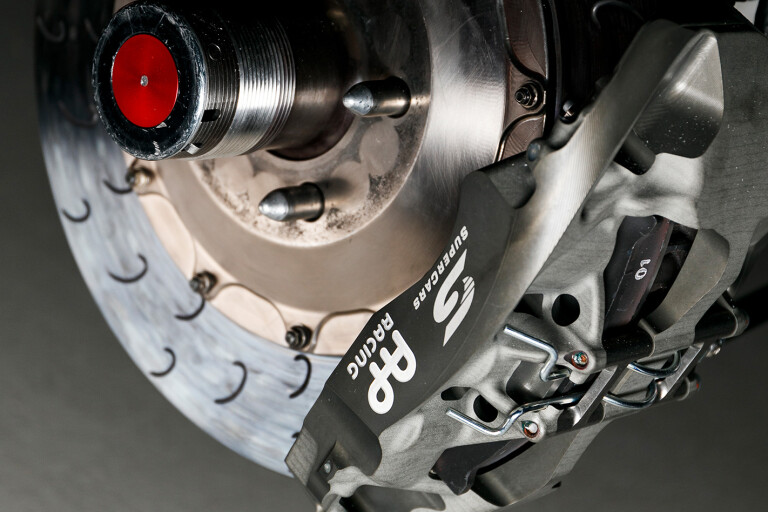
The key measures of the Gen2 chassis mean the Mustang Supercar is longer and narrower than the road car. There is not one panel that carries across from road car to race car. That’s a first, because even the ZB retained its stock aluminium bonnet. But that’s not the issue. It’s the roll hoop.
It has a kink designed so taller drivers can fit without hitting their helmets on the tubing. Combine that with the fact the rollcage was originally designed to fit over four-door bodies, not fastback coupes and Houston... we have a problem. It’s a problem that took a long time to work out, and one that some people still argue has not been fixed.
There’s no way round it, the glasshouse of the Mustang Supercar is more upright and bulbous and simply does not flow into the rear like the fastback road car. And there’s simply more rake from front to rear, the snout has been purposely left at about road-car height, but the bum is high.
“We designed the best Mustang we possibly can within the rules of the series, and the rules of the series dictate the rollcage has a certain height and we have cleared it,” says Story.
“There are some aesthetic decisions we have made that are driven by performance.”

Considering Todd Willing’s team at Ford Design in Melbourne contributed heavily to the look of the Supercar in an attempt to preserve the styling linkage to the road car, you’ve got to wonder how much stranger it could have looked.
“It was just a lengthy process for them to understand this is not a Mustang. It’s a Mustang B,” says Lacroix.
At the same time, Ford Performance in the USA was crunching the data and developing the car’s aerodynamic performance using CFD, the digital equivalent of a wind tunnel, something essential in a championship where physical wind-tunnel testing is banned.
Iterations looped relentlessly; A-P Design pushed road-car DNA, Ford Performance sacrificed DNA for speed and DJRTP kept overlaying the series rules and its own requirements.
“Trying to make them understand the philosophy of the championship was difficult, because it is a very specific championship in terms of what you can and can’t do,” says Lacroix.
“It’s not all written rules. Some of it is ‘no you can’t do that, you can’t have a sharp edge, you can’t have a winglet’ etc, etc.”

Novak offers a blunt racer’s perspective: “There are no ugly cars in victory lane,” he says down the line from Detroit. He’s right, and if the aerodynamic surfacing Ford Performance has applied is effective, then the Mustang will look a lot sexier really quickly.
In motor-racing terms, Supercars do not have a lot of aero-generated grip, or downforce. It’s true that Supercars does its best to equalise what downforce and drag is generated across the field – just as it attempts to establish parity of engine power and torque. But take a look at the Mustang’s splitter, its 1500mm-wide rear wing, or those giant endplates, and tell us aero isn’t important.
“A new F1 car with new aerodynamics makes two seconds, the new aerodynamic for us is maybe a 10th or 10th and a half at best, on an aerodynamic track,” Lacroix explains.
The point left unsaid is that in a field routinely separated by one second in qualifying, a tenth is a lot. And in a championship where winners rarely come from anywhere beyond the first few rows, qualifying is key. And while Supercars tests aerodynamics in a straight line, there is no yaw, or cornering, parity testing. That’s the loophole, the opportunity.
So, pay attention to that big rear-deck extension. It’s similar to the one on the ZB, and designed to achieve the same purpose – to give the air room to calm itself over the rear of the car before hitting the wing. It’s the flat boot lid the Mustang road car doesn’t have.
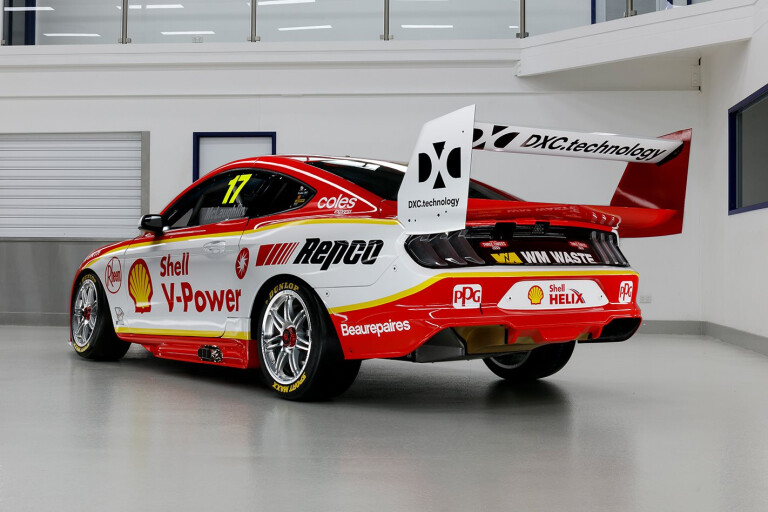
The ZB generated less drag and more rear grip than the Falcon in 2018, and that’s exactly what the Ford men are chasing for the Mustang, why it was important go testing on Phillip Island’s high-speed curves, and why Story is so pumped about the result.
“Is a new, efficient modern Supercar going to equate to better results than an ageing Falcon Supercar?” he ponders.
“You’d have to say yes.”
But will it be a winner? We’ll find out very soon.

COMMENTS